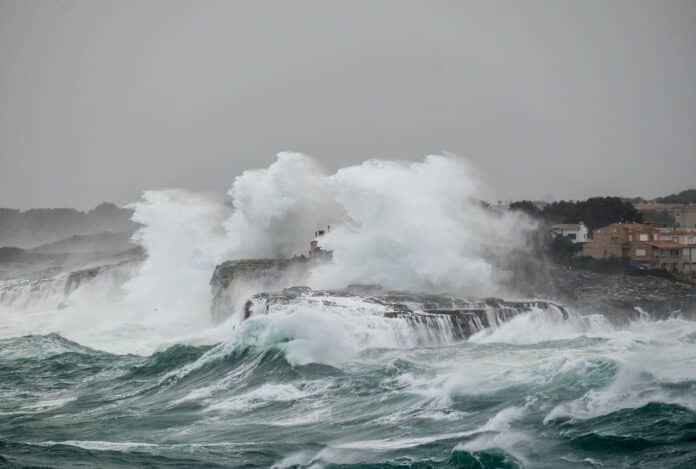Tsunamis, caused by large earthquakes below or near the ocean floor, landslides, and volcanic activity, are among the most deadly natural disasters. Tsunamis inflict death and damage through violent, powerful flooding along the world’s coastline.
Current warning systems rely on waves reaching sea buoys before tsunami warnings are triggered, leaving little time for evacuation. Sea buoys are used together with seismic sensors to measure underwater earthquakes, but the technology is not always accurate in predicting the danger posed by resulting tsunamis.
Now, scientists at Cardiff University’s School of Mathematics have developed an early warning system that quickly classifies submarine earthquakes and determines the risk of tsunami events. The team combined state-of-the-art acoustic technology with artificial intelligence (AI) to monitor tectonic activity in real time.
Researchers have a mathematical model that combines analytical and machine learning techniques capable of retrieving rupture characteristics from acoustic data. The model was applied with short computational times to data recorded by the comprehensive nuclear-test-Ban Treaty organization hydrophones during four tectonic events that were reported to trigger tsunami waves.
Using these sound recordings captured by underwater microphones, called hydrophones, researchers were able to detect and analyze in real-time the acoustic radiation produced by 200 earthquakes that happened in the Pacific and Indian Oceans.
Algorithms then classify the earthquake’s slip type and magnitude before earthquake properties like length and width, uplift speed, and duration are calculated to reveal the size of the tsunami.
“Our study demonstrates how to obtain fast and reliable information about the size and scale of tsunamis by monitoring acoustic-gravity waves, which travel through the water much faster than tsunami waves enabling more time for evacuation of locations before landfall,” said Dr. Usama Kadri, Senior Lecturer in Applied Mathematics.
Journal reference:
- Bernabe Gomez and Usama Kadri. Numerical validation of an effective slender fault source solution for past tsunami scenarios. Physics of Fluids, 2023; DOI: 10.1063/5.0144360
